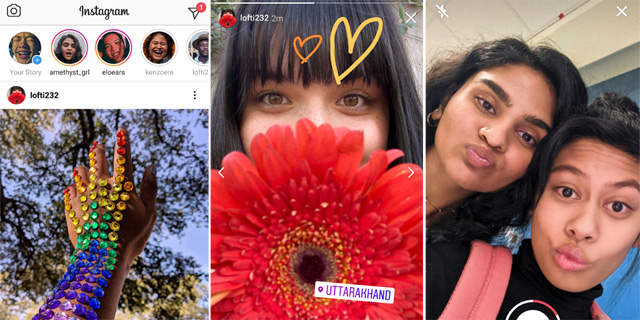
Interview
Israeli product manager takes us behind the scenes of developing Instagram Lite
Michelle Lourie and her team put Instagram on a low-data diet to improve service in remote locations
"We know that there are a large number of people around the world that have low memory phones, very weak network connections and data considerations and who cannot currently use Instagram. We wanted to give them access to Instagram and help provide an uncompromising experience for these audiences," Lourie told CTech. "Overall it is very similar to the regular Instagram app, there are features that we currently do not support like Live, Dark Mode and Reels Creations. We are working on further building out Instagram Lite and striving to reach feature parity with the regular Instagram app, while also building new experiences that meet our audience's needs."
The technology team in Facebook Tel Aviv, which is one of the largest strategic engineering hubs for Facebook globally, was perfectly suited for building Instagram Lite after leading the product development for Facebook Lite since 2015. "Instagram Lite was developed in joint efforts of the Instagram team, based in New York City, and the Lite Interfaces team, based in Tel Aviv. A lot of it built on top of the work we did for Facebook Lite in Tel Aviv - we took many of the lessons learned from creating FB Lite and applied them to IG Lite," said Lourie. "So, the Tel Aviv side brought the expertise of building Lite apps and focus on Performance, and the Instagram side brought the expertise of the Instagram product and building for this community. We wanted to offer people the same high-quality Instagram experience that will work well on any network conditions.” Lourie broke down the work being done at Facebook’s Tel Aviv offices. "Our local teams are leading many projects end-to-end, in different focus areas at global scale. Further to Lite interfaces, we also work on Express Wi-Fi, which is part of our initiatives to bring fast, affordable, and reliable Wi-Fi to emerging markets that remain unconnected. Other local teams are building the infrastructure behind Facebook Shops and Instagram Shopping, AR/VR, AI and Novi. The site is purposely designed to be cross-functional to allow us ownership of product areas we develop. That’s why in addition to engineering, we also have UX and market research, analytics, design, production engineering, QA, PM and data scientist on site. The site was first opened in 2013 and hasn't stopped growing ever since." Facebook wanted the Instagram experience to remain fast, high-quality, and reliable, irrespective of the device, platform, and network people. But creating that experience was complicated by the pandemic. Aside from the usual challenges of working remotely, the team’s market researchers were unable to travel to target markets, like India or Brazil, to test out the product. Instead, each member received a rudimentary phone of their own to see first-hand whether the app felt like something they would use. "There was a challenge, on one hand, meeting Instagram's high bar for quality and craft but on the other hand keeping the app ‘Lite’. In order to do this we moved most of the code to FB cloud instead of running it on the client side (on the device); this allows us to reduce the App size to be very small and also to reduce the memory consumption and processing time on the device,” explained Lourie. “We understand that these are important value propositions for people with low end devices.”The new app requires only two megabytes to download on Android — considerably less than the full-size version, which was closer to 30MB. Facebook focused on what users valued most, namely video and messaging, which remote dwellers use more actively than their urban counterparts. To keep performance reliable, the team removed much of the ornate, data-rich animation, such as cube transitions or AR filters people can apply onto faces.
Lourie said the team learned many lessons from the development of Facebook Lite. "I was previously the Product Manager for the Facebook Lite Experience team and there are some basic UI/UX patterns that we made sure to incorporate when building for this audience. For example - ‘Feedback’. When you have a bad connection and you conduct an action you can’t be sure if it is in fact happening or if your app is slow/stuck. It is important to give people constant feedback with messages, touch feedback to let them know it is a work in progress and not that they are stuck," she said. "We have been getting some great feedback from people that were waiting to use the app and now that it is available, feel that it is meeting their needs which is great. We have also gotten a lot of feature requests from people that want Dark mode or Reels." Lourie said the team receives a report that they look at weekly with all the feedback aggregated, helping them plan the next features they are going to build. Lourie described the true measure of Instagram Lite's success as “giving true access to people around the world that really want to use Instagram but can’t today. "Allowing them to create, share and be inspired on Instagram Lite would be considered a success," she concluded.